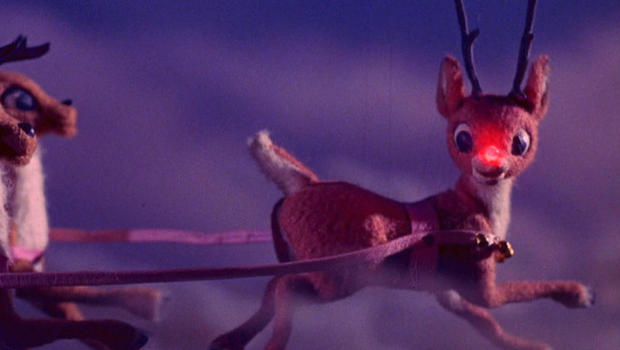Monthly Archives: December 2015
CFP – Youngsters: On the Cultures of Children and Youth
- Wendy Hui Kyong Chun (Professor, Chair of Modern Media and Culture, Brown University)
- Steven Bruhm (Robert and Ruth Lumsden Professor of English, Western University)
- Dr. Leanne Betasamosake Simpson (Author, Activist, and member of the Alderville First Nation)
The Association for Research in the Cultures of Young People invites proposals for an inaugural conference in the field of children’s and youth cultural studies. While scholars have been producing exciting work in the field for decades, that work has found itself positioned most often under the umbrella of other fields, including children’s literature, education studies, sociology, media studies, or cultural studies itself. This conference seeks to establish itself as a biannual event to draw together scholars from these diverse fields to showcase and discuss the astonishing breadth of interdisciplinary scholarship in children’s and youth cultural studies.
We therefore welcome approaches to the study of childhood and children’s and youth cultures from an array of disciplines, fields, and historical periods, including work deploying a wide range of methodologies and theoretical approaches. Themes and topics may include:
- The Racialization of Childhood Media Darlings
- The Spoils of Childhood Child’s Play
- Children’s and Youth Spaces Tender Travellers
- The International Child Theory’s Children
- Youth Labours Youth Subcultures and Scenes
- Methodologies of Child and Youth Reproduction and/as Ideology
- Archiving Young People The Problems and Futures of Sex-Ed
- Criminal Youth and Child Perpetrators Animated Childhoods
- Indigenous Youth Cultures Out of the Mouths of Babes
- Pedagogy and Its Discontents Sonic Youth: Where Sound Meets Subculture
- Cultures of Risk Baby Cultures
- Queer and Trans Childhoods Kinder Gardens: The Child in Ecocriticism
Submission Guidelines
Individual Submissions:
All individual proposals must be submitted by email to admin@arcyp.ca by 11:59pm PST on January 15, 2016. Please use the following format for the subject line of your email: “Proposal Last Name First Name” (eg. Proposal Woodson Jacqueline). Please assist us by attaching a single document in .DOC, or .DOCX format only with the following information in exactly the order listed below:
- Paper Title.
- Name; institutional affiliation; position or title; degrees and granting institutions; email address; and phone number.
- Abstract of the content and rationale of the paper: up to 300 words. (Presentation time for papers is 20 minutes maximum)
- Brief (2-3 sentence) scholarly biography of presenter.
- Indicate any audiovisual needs or special accommodations.
Panel Proposals:
Final panel proposals, including proposals for no more than three individual presenters (formatted as above) are due by no later than 11:59pm MST on January 15, 2016. Papers not accepted by panel organizers may be resubmitted to the general call for consideration provided they meet the above deadline. Please respond to all submissions in a prompt and courteous manner. Please use the following format for the subject line of your email: “Panel Last Name First Name” (eg. Panel Rowling J.K.). Please assist us by attaching a single document in .DOC, or .DOCX format only with the following information in exactly the order listed below:
- Panel Title.
- Name; institutional affiliation; position or title; degrees and granting institutions; email address; and phone number
- Copy of the panel proposal (up to 150 words).
- Brief (2-3 sentence) scholarly biography of organizer.
- Indicate any audiovisual needs or special accommodations.
- Three proposed papers & related information formatted as above under “Individual Submissions”
The Conference Review Committee is open to considering creative panel submissions, and would ask that those interested in submitting such a proposal contact the Committee directly at admin@arcyp.ca prior to submission.
CFP – the VII Conference on Childhood Studies, 6-8 June 2016, Turku
 ‘Childhood in Everyday Life’
‘Childhood in Everyday Life’
6-8 June 2016 Turku, Finland
The international conference on childhood studies (http://www.childhood2016.fi) is a multidisciplinary forum for research on children and childhood. The event is organized by the Finnish Society for Childhood Studies and the Child and Youth Research Institute CYRI on 6th– 8th June 2016 in the University of Turku and Åbo Akademi University, Finland. The theme of the seventh conference is Childhood in Everyday Life.
The keynote speakers are:
– Professor Emeritus Jonathan Bradshaw (University of York, UK)
– Professor Anja Huizink (VU University Amsterdam, the Netherlands)
– Professor Simo Vehmas (University of Helsinki, Finland)
– Associate Professor Patrick Ryan (King’s College, Western University, Canada)
The conference offers possibilities for an interdisciplinary exchange of ideas for researchers who work with children or child related issues. We welcome papers that relate to the main theme Childhood in Everyday Life from different viewpoints. These abstract topics include but are not limited to:
- equality and inequality
- well-being and health
- food and eating
- play, sports and leisure time
- social relations
- consumption and market economy
- upbringing and education
- protection and safety
- mobility and segregation
- class, ethnicity and culture
- change and continuity
- history and future
- technology
- media
- disability
- diversity
- special childhoods or special needs
- some other viewpoint
A proposal can be submitted for individual paper presentation, poster presentation, self-organised symposium or workshop.
Deadline for submission of abstracts is 31st January 2016.
For more information and detailed guidelines, please see http://www.childhood2016.fi/
We warmly welcome you to Turku!
Scientific Committee and Organizing Committee
For further information, see: www.childhood2016.fi/
Inquiries: child2016@utu.fi
Find us also in twitter: www.twitter.com/childhood2016
Reindeer Magic
Mythology is a living entity of culture in which cross-generational discourse can play a lively role. American Christmas and its Santa Claus mythology are a case in point. My early fieldwork on Santa Claus (conducted in the Midwest in the late 80s) showed that children’s perceptions of Santa and his reindeer carried impact on how family ritual was carried out. This is how I wrote about this issue in the book Flights of Fancy, Leaps 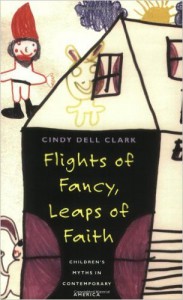 of Faith (University of Chicago Press, 1995) as specifically applied to Santa’s red-nosed reindeer, Rudolph.
of Faith (University of Chicago Press, 1995) as specifically applied to Santa’s red-nosed reindeer, Rudolph.
Children have mythologized Rudolph the Red-nosed Reindeer, who guides Santa’s sleigh with his bright red nose, an element of the Santa Claus myth often overlooked by adults. To leave out Rudolph seems mistaken to most children, who have embraced this misfit hero as so real that they often leave Rudolph an offering of a carrot or apple on Christmas Eve. (Rudolph conforms to a motif common in children’s folklore – the “ugly duckling” motif; in that motif, the very trait that makes someone a misfit is found to yield outstanding talent or specialness.) Rudolph was left out of the story in the movie 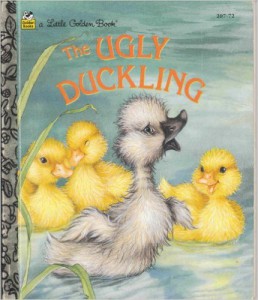 Ernest Saves Christmas, a fact about which juvenile moviegoers (in the audience I observed) complained aloud. When recalling how they once looked up in the sky and saw Santa’s sleigh, informants sometimes said they saw Rudolph, too.
Ernest Saves Christmas, a fact about which juvenile moviegoers (in the audience I observed) complained aloud. When recalling how they once looked up in the sky and saw Santa’s sleigh, informants sometimes said they saw Rudolph, too.
Children’s collective belief in Rudolph is all the more remarkable given how recently this cervid creature entered the Christmas lexicon, not via poetry or art (as Santa was shaped by Clement Clark Moore’s famous 1823 poem and Thomas Nast’s 1863 illustrations) but via commerce – Rudolph was a character in a flyer distributed by the mail order catalog Montgomery Ward. 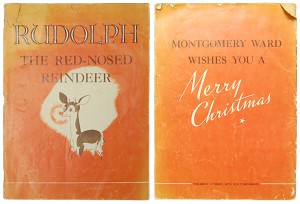 Rudolph’s invention dates to 1939, buoyed on in 1949 in a popular song written by Johnny Marks. In less than two generations, Rudolph has a hold on the mythological imagination of the young, as a character with whom they identify. Children write notes and letters to Rudolph. The idea that Rudolph’s “special
Rudolph’s invention dates to 1939, buoyed on in 1949 in a popular song written by Johnny Marks. In less than two generations, Rudolph has a hold on the mythological imagination of the young, as a character with whom they identify. Children write notes and letters to Rudolph. The idea that Rudolph’s “special
power” derives from the red nose that made him a social anomaly
resonates with American children (“If there’s a big fog he can light up his nose and then show Santa the way”). These same kids are also fans of other mutants-turned-superheroes, exhibited by the sustained popularity of the Teenage Mutant Ninja Turtles, Spiderman, and many more. Rudolph is a self-actualized hero because he is true to his individual specialness, a trait important to young folk in the world’s most individualist society. Santa is God-like, the source of much magic, to young believers. Less directly, Rudolph taps into enchantment by being true to his individual calling. 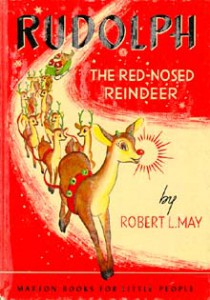
Immediately after Christmas in 2014, I conducted interviews with Jewish kids aged 6 to 8 years and their parents. I found that Rudolph was a compelling figure within the mythopoetics of Christmas, even among kids who celebrated Chanukah, not Christmas. Jewish children’s beliefs about Santa
varied. Some discounted Santa’s reality, others believed in Santa’s reality despite the fact that he doesn’t visit Jewish kids’ homes. A few who believed in Santa envied the kids he visited. Even among non-believers, though, Rudolph was a compelling figure.
 Judy, an eight-year-old girl who lived in a neighborhood with many other Jewish families, had told her mother (the week before Christmas) “I wish we were Christian to celebrate.” Judy was familiar with Christmas, since her maternal grandparents (who were in a Christian-Jewish marriage) celebrated the Christian holiday, including presents on December 25. Judy, like other kids being raised in Jewish families, couldn’t help but be intimately familiar
Judy, an eight-year-old girl who lived in a neighborhood with many other Jewish families, had told her mother (the week before Christmas) “I wish we were Christian to celebrate.” Judy was familiar with Christmas, since her maternal grandparents (who were in a Christian-Jewish marriage) celebrated the Christian holiday, including presents on December 25. Judy, like other kids being raised in Jewish families, couldn’t help but be intimately familiar
with the entire iconography of Christmas, given its saturation in the majority culture. Jewish kids watch movies about the North Pole, Santa, his elves, and his reindeer for these are both hard to avoid at yuletide, as well as good entertainment even for non-believers.
By sheer exposure to Christmas movies and hype, Jewish kids left out of the Santa ritual still learned all the nuanced details of the Santa Claus mythology, but through a more marginalizing lens. Judy, for instance, was quite aware that Rudolph played the role of “Santa’s head reindeer.” In recounting stories (and a song) about Rudolph, she remembered best the way that others made fun of Rudolph, the fact that his exceptionality (red nose) led to being socially marginalized by peers. “Santa felt bad for him,” she recalled, suggesting that Santa’s sympathies lay with the outcast rather than the others who rejected and teased Rudolph.
Another mother I interviewed in 2014 drew a direct association between Rudolph and the actual lives of her children. When considering narratives about Rudolph, she revealed, her kids “notice how Rudolph might be sad, or be pushed aside … because he’s different.” This mother’s face showed a lingering sadness and her eyes filled with tears, as she explained that both of her two children had known the experience of being treated in a mean way by other children. Her son Randy, age eight, did not mention being ostracized when I talked with him. But he volunteered that he related to the
poetic trope of Rudolph as a 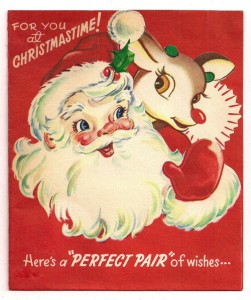 “misfit.” He prceived Rudolph as admirable, a figure who by virtue of exceptionality had attractive adventures. “Red noses are awesome,” Randy intoned, because “then you can see in the dark.”
“misfit.” He prceived Rudolph as admirable, a figure who by virtue of exceptionality had attractive adventures. “Red noses are awesome,” Randy intoned, because “then you can see in the dark.”
Without exception, the Jewish children I visited had been taught not to disturb the beliefs of others who regarded Santa and his reindeer as real. Along the divide between Jews and Christians, Christmas is a both a test of and opportunity for pluralism. From navigating the Christmas dilemma (as one mom called it) kids who are members of a minority religion learn how to live and let live. The magic of Rudolph, it would seem, lies ultimately in the capacity to remind us that exceptionality is valuable in the American cultural context, perhaps especially so to those who are in the minority.
The National Collection of Children’s Books, Ireland
Dear colleagues,
I would like to draw your attention to a new children’s books resource which may be of interest to you and your students: https://nccb.tcd.ie
The National Collection of Children’s Books (NCCB) is essentially an online platform, with a catalogue and database, that facilitates the exploration of over 250,000 children’s books in over 90 languages from five libraries in Dublin, Ireland. The project, funded by the Irish Research Council, began in December 2013 and ended in December 2015. NCCB was led by Dr Pádraic Whyte (School of English, Trinity College Dublin) and Dr Keith O’Sullivan (Church of Ireland College of Education).
The National Collection of Children’s Books (NCCB) was a two-year interdisciplinary and inter-institutional project (Church of Ireland College of Education and Trinity College Dublin) examining children’s books held in five libraries: Trinity College Library; Church of Ireland College of Education Library; Dublin City Library and Archive, Pearse Street; the National Library of Ireland; and Cregan Library, St Patrick’s College, Drumcondra (DCU). It is hoped that the NCCB project is the first step towards a more comprehensive detailing of collections of children’s books in libraries throughout Ireland.
The NCCB website has two main functions:
A centralised catalogue of children’s books collections in the five aforementioned libraries, allows users to search for items across the five libraries. The main catalogue of records includes all titles in over 90 languages, including English, Irish, French, German, Italian, Latin, Ancient Greek, Spanish, as well as other European languages. It is hoped that the project will contribute to the continuing development of the strong Irish profile in children’s literature research by providing a centralised online platform that will attract both national and international scholars and encourage new research in the area.
There is also an additional database section that highlights a significant number of texts of interest from these libraries and provides further detailed descriptions of, and images from, these texts. The additional database focuses on English-language texts of interest to the NCCB’s English literature scholars. However, it is hoped the database will encourage other language and literature scholars to explore the main catalogue and, if they so desire, develop the database further.
Further details can be found at https://nccb.tcd.ie/about
Wishing you all the best for 2016,
Keith O’Sullivan and Pádraic Whyte
The Role of Anthropology in Improving Services for Children and Families – SPECIAL ISSUE
The Role of Anthropology in Improving Services for Children and Families
Appointment as professor in Child studies with a historical bearing
A small reminder of our call for a new professor in Child studies!
Child Studies, Department of Thematic Studies, Linköping University, Sweden, invites applications for an appointment as Professor in Child Studies with a focus on children and childhood from a historical perspective.The application must be received at latest January 28, 2016. Please see attached announcement for further details: http://www.liu.se/jobba/lediga-jobb?l=en&&rmpage=job&rmjob=2374&rmlang=UK
Child Studies carries out unique research combining a focus on children’s agency and their social interactions with a critical and theoretical awareness of the shifting meanings of childhood in time and place. We welcome all applicants who are interested in developing their research on children and childhood with a historical bearing in a multi- and transdisciplinary environment.
If you have questions, please contact:
Karin Zetterqvist Nelson (karin.zetterqvist.nelson@liu.se)
Asta Cekaite (asta.cekaite@liu.se)
Child studies: http://www.tema.liu.se/tema-b?l=en&sc=true
Call for Neos Submissions
Dear ACYIG Members,
ACYIG is now soliciting submissions for the February 2016 issue of Neos. We will accept the following contributions during our rolling submission period of December 14-January 4:
Letters to the Editor (250 words or less), in which members comment on Neos and/or its contents.
Photos from the Field, which should be accompanied by a caption of 30 words or less explaining the context of the photo.
New Book Announcements (250 words or less), which must include the title, author, publisher (and the book series, if applicable), date of publication, and listing price of the book, in addition to a description of the contents. If possible, please send, as a separate attachment, a digital image of the book cover.
Member News (200 words or less), in which members may submit job announcements and research opportunities; grants/prizes available; calls for papers and conference announcements; recent appointments; grants received and/or prizes awarded; publication announcements; and other professional achievements.
Correction Notices may be submitted to the editor if Neos has printed an error in a previous issue.
We have processed all articles submitted by the December 4 priority deadline for the February 2016 issue. Any article submissions received during our regular rolling submission period will be pushed back to the following issue.
Please refer to the General Submission Guidelines on our website at https://acyig.americananthro.org/neos/neos-submission-guidelines/ for more detailed information. All material should be sent to ACYIG.Editor@gmail.com.
We look forward to receiving your submissions!
Best,
Kate Feinberg Robins and Aviva Sinervo
Co-Editors for February 2016 issue of Neos


